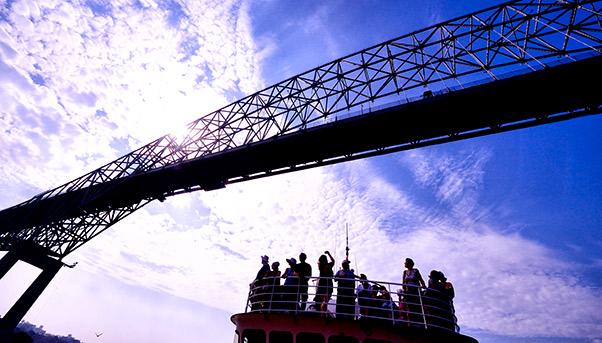Tourism, finance and, naturally, logistics and trade: Panama’s growing economy is founded on these sectors. After registering steady growth for years, they have turned the country’s location in Central America into an advantage, succeeding it placing it among the ranks of wealthy economies.
Since 2000, Panama’s gross domestic product (GDP) has grown by an average of 6.8% a year, a trend that should be repeated this year. By 2020, it could reach an average of 8% a year, according to the World Bank.
The secret behind this boom is Panama’s ability to have recovered from a severe crisis in the 1990s to build an economy based almost entirely on services - a model followed by Singapore.
This development has also benefited from the revenue generated by the Canal. In the last three years, 12,000 ships have sailed through its waters, carrying an average 63 million TEUs (twenty-foot equivalent units) a year. As a result, the Panama Canal Authority has received $2 billion every year. In 2015, it reached a peak of $2.5 billion. After labor and management costs related to the functioning of the canal, the Authority transfers to the government an average of $1 billion every year. This significant impact on the country’s economy is destined to triple with the opening of the new Canal, reaching $6 billion a year.
The Canal, through which passes 3% of global trade, as well as the country’s strategic location and historic ties to the United States have caught the attention of international investors, especially in recent years. In 2014, the latest available figures from the World Bank show how foreign direct investment in Panama reached $5.2 billion after growing in a sustained way since 2010 when the amount had reached $2.5 billion.

An Economy Behind the Canal
Another role that Panama has cut out for itself is as an international financial centre, becoming the third most important in Latin America after Brazil and Mexico. It hosts 90 banks, 40 of which are international.
In construction, the sector is expected to contract in 2016 and 2017 after expenditures have been mostly focused on the expansion of the Canal. From 2018, it is seen growing again as the government focuses on spending on infrastructure. Growth will come from big transportation projects, among which an ambitious plan to have nine metro lines in the city. Lines 2 is under construction for $2.2 billion, while another $2 billion is to be spent this year.
The development of the port’s modern infrastructure alongside the Canal will also be an engine of growth, what with the PSA terminal project of $400 million begun in late 2015 and a series of other projects under construction.
Then there is tourism, one of the country’s strengths given its cultural and geographic vicinity to the United States. The Tourism Authority of Panama has calculated that in 2015 the sector generated $5.3 billion, or $2,000 per tourist. For the same year, the number of tourists reached 2.5 million, up 10.8% from the prior year. Visitors are coming from all over the world: the United States, Mexico, Brazil, Peru and even Europe and Asia. Many of them do not leave Panama without first having visited the canal.
All photos of “The New Panama Canal” Special Issue are copyrighted: Copyright © Edoardo Montaina by Salini-Impregilo


